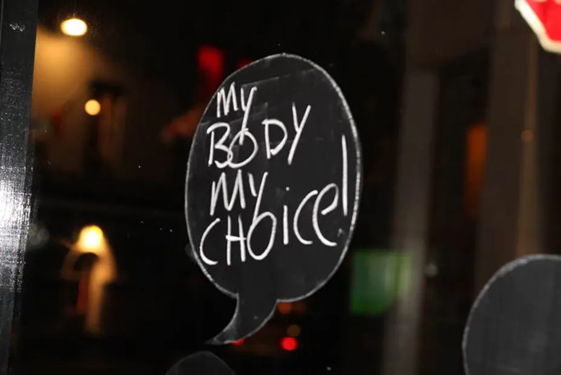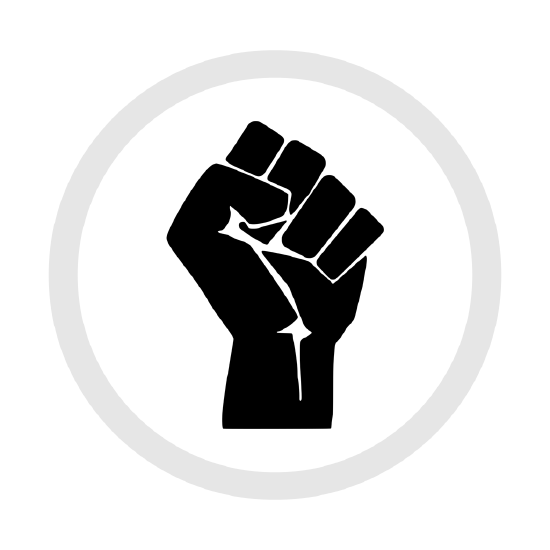12.3: Abortion
- Page ID
- 167953
The previous section highlighted contraceptive options in order to prevent pregnancy. Once pregnant the option to end a pregnancy is available via abortion. An Abortion is the termination of a pregnancy by the removal or expulsion of the fetus. Millions of people decide to have abortions annually in the U.S., for varying reasons. Many health providers do abortions as a part of standard health care. Planned Parenthood, the organization that Margaret Sanger helped to found, has provided a variety of reproductive health services for women since Sanger’s first clinic in 1916. Abortion services are part of what they provide.

There are two types of Abortion, The Abortion Pill and In-Clinic Abortion. The abortion pill works up to 11 weeks of pregnancy and can usually be taken at home. The combination of medications causes the uterus to cramp and bleed and expel it’s content (Abortion, 2022). Depending on how far along the pregnancy is, it is anywhere between 87-98% effective. In-clinic abortions are safe, simple medical procedures provided by doctors and nurses at a health center. There are two methods used based on individual patient and clinic decisions. The first type uses gentle suction to empty the uterus. The second type can be used farther along during the pregnancy. Dilation and Evacuation (D & E) employs both suction and medical tools to evacuate the uterus. Both surgical methods are over 99% effective (Abortion, 2022).
As with most of the topics that surround human sexuality, there are often debates regarding value judgment and ethical considerations and few are more controversial than abortion. Legal access to abortion became the law of the land in the United States as a result of a couple of cases in the early 1970s, most famously Roe V. Wade, when Jane Roe challenged a Texas law that prohibited abortion except in vary narrow circumstances. A long history of anti-choice or pro-life attempts to block a woman’s right to choose has kept Roe V. Wade a tenuous legal decision. In May of 2022 the United States Supreme Court, led by male Justice Samuel Alito, leaked a draft opinion to vote on whether to strike it down after nearly half a century. On July 1, 2022 Roe V. Wade was officially struck down. Abortion is no longer a federally protected right for women. In effect, leaving the decision to individual states which drastically changes the landscape and makes access to safe and legal abortion a lot more difficult if not impossible nationally. Texas most famously continues to be a battleground for this issue, passing legislation that would limit a women’s right to choose but less than half way through 2022 alone there have been over 500 bills in 39 states attempting to restrict legal access to abortion (Fallert, 2022).
Many health care providers, private doctors, clinics, and Planned Parenthood provide abortions. Although it is not the majority of Planned Parenthood’s work, they are often targeted by those seeking to end the right to choice in the United States. Clinics and providers have been bombed, threatened and ostracized in their communities, and those seeking abortions have been harassed by anti-choice protesters. The right to choose is never secure, and as a result, Planned Parenthood is one of the strongest advocates for preserving this right. Planned Parenthood’s policy and advocacy work does so with the goal of a world where all can make decisions about their own bodies, families and futures with dignity (Abortion, 2022).
Oklahoma and Texas are just some of the states currently overturning the right to abortion in their state. In 2022, 50 years after Roe became the law of the land, abortion rights are no longer guaranteed nationally and those seeking abortions in states where they are banned will have to travel across state lines to seek this medical treatment. Laws change based on lawmakers and voters thoughts around legal and safe abortion. The Guttmacher Institute, a research and policy organization committed to advancing sexual and reproductive health and rights (SRHR) worldwide has created an interactive abortion law by state infographic that breaks it all down. In the 50 years since the right to choose has been federally protected by law, there have been over 1300 legal attempts to overturn it and now that right has been revoked. As of this writing, the right to choose will be up to individual states to decide because it is no longer federally mandated.
“It was easy to spot that combination of defenselessness, eagerness to please and most of all a willingness to blame herself for the meanness of others”
-Toni Morrison. A mercy
I remember the first abortion I had. I was in college, it was a one night tryst and I had no intention of becoming pregnant. I blamed myself, and was unwilling to seek support from the person that contributed to the pregnancy. I was ashamed as I went into the clinic to get it done. The doctor was a parent at the preschool I taught at and as alone as I felt, I imagined she would comfort me in the same way as I comforted her child. The procedure did not go well. The doctor had punctured a hole in my uterus and the suctioning could not take place. She was annoyed with this and told me we had to redo the procedure in the hospital. It felt as if somehow this was my fault, my body was wrongly organized or something and she was profoundly unkind. The procedure was later done effectively in the hospital but the handling of the experience lingers in my own self-blame.
The others are a blur. Mostly hidden under a cloak of shame, sometimes telling the person who impregnated me, sometimes not. My last abortion occurred after I was already a mother, which created a different sense of pain. Working through the mixture of loss and gratitude for choice is complicated. For me, I know that if I were more empowered to act on my own behalf from early on and had better control of my fertility, I would have not needed to go through this. Keeping sexuality closeted in shame and the double standards surrounding it makes advocating for our bodies that much harder. We live in a culture that makes the shame of deciding to get an abortion something that must be kept secret. I share my complicated story because I am not alone, and telling the story is both cathartic for me and hopefully, will resonate with others who have a story. I am thankful that it was my right to have an abortion, however painful and complicated it was. Despite being almost 50 years since the landmark Roe V. Wade decision to allow the right to choose, the fight remains to preserve it.

There are many who share their stories in similar hopes. The American Civil Liberties Union (ACLU) highlights stories of others Abortion is Essential: Stories of Liberation.
We Testify is another organization dedicated to the leadership and representation of people who have abortions. We Testify unapologetically believes that people who have abortions deserves unconditional love and support. Read more at wetestify.org.
What if?
- Children had compulsory sex education that was age appropriate throughout their school years.
- Children and teens were taught about effective forms of birth control and STI prevention without fear or shame.
- Access to reproductive services from education to contraception and safe abortion was free and available to all.
Would these action steps lower the incidents of unwanted pregnancies and unsafe DIY abortions? Something to consider.


